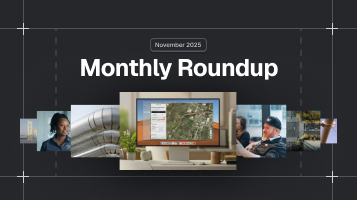The Infrastructure Investment and Jobs Act: Utility Implications
Written by

Published on
April 17, 2022


Table of contents
In November 2021, President Biden signed the $1.2 trillion Infrastructure Investment and Jobs act into law. The legislation, which will fuel a wave of new infrastructure construction across the United States, has some big implications for utility stakeholders across the country.
In this post, we’ll touch on a few points:
- The 2021 Infrastructure Investment and Jobs Act and its impact on Texas
- What are some specific challenges for utility coordination in Texas?
- How can utility mapping help set large infrastructure projects up for success?
What’s in the infrastructure act? How does it affect Texas?
The 2021 Infrastructure Investment and Jobs act includes major investments for nearly every sector of American infrastructure. In the transportation sector, major funding is headed to repair and develop highways, bridges, rail, aviation, and inland waterway infrastructure.
In the environmental and water sector, the act funnels funding to new renewable energy development, new and improved water infrastructure, as well as $5 billion to develop thousands of electric vehicles charging stations around the country.
In the energy sector, the bill pours resources into strengthening the energy grid, with $65 billion dollars going towards modernizing electric grids across the country. And in the broadband sector, the bill directs funding to expand broadband access throughout the country—especially in previously underserved rural areas.
As this funding begins to flow across the country, it stands to have a huge impact on the construction and infrastructure industries—and of course on utility stakeholders.
Texas, as the state with the fastest growing population in the country, is slated to gain over $35 billion of much needed investment over the next five years from the infrastructure bill. According to the Texas branch of the ASCE, Texas infrastructure is in serious need of an upgrade.

According to the White House, the federal Infrastructure Investment and Jobs act included $2.9 billion for water infrastructure in Texas, as well as $27 billion for federal-aid highway programs and $500+ million for investments in bridges.
The act will also direct several billion dollars towards the ongoing effort to weatherize Texas’ electrical grid—which suffered a catastrophic failure following severe winter weather in February 2021.
While the exact timing is uncertain, this funding should begin flowing into the Texas infrastructure sector in the coming few years. The Texas DOT suggested that, in addition to new funded projects, the increased federal funding could allow the DOT to move up certain projects outlined in its existing 10-year plan.
What are some specific challenges for utility coordination in Texas?
With the coming surge of new infrastructure construction, utility coordination will be more important than ever. As one of the centers of the American energy industry, Texas can be a particularly challenging state for stakeholders setting a utility strategy for their projects. According to the Texas Railroad Commission, Texas has over 480,000 miles of pipelines—1/6 of the entire US total. Many of these pipelines are unregistered and hard to find gathering lines, which can pose a special challenge.
While the Texas Railroad Commission is one of the largest and most organized regulatory commissions in the country, as-built data on pipelines across Texas still isn’t always reliable enough for the needs of project owners, general contractors, and engineers.
A second challenge for utility coordination stems from one of Texas’ strengths: its size and growing population. As one of the largest and fastest growing states in the country, the scope of Texas’ infrastructure networks—and the growing demands on it—mean that new construction at large scale is a constant. That can lead to a constantly changing infrastructure and subsurface landscape. Without accurate as-built data, these changes can make consistent utility record keeping difficult, and can quickly render existing data unreliable. For project owners and general contractors, that can create additional risk.
How can utility mapping set infrastructure projects up for success?
We’ve discussed on this blog at length how one of the central problems plaguing the construction and infrastructure industries is the lack of accurate and reliable as-built data. Throughout all stages of the project delivery cycle, project stakeholders are forced to make decisions based on incomplete and often inaccurate as-built data that doesn’t always reflect the subsurface reality. While in some states, like Colorado, new regulations ensure that as-built data is collected at a high-quality level, that’s not the case in most of the United States.
Subsurface utility mapping fills in the gaps left by as-built data, validating some data and often providing new insight into subsurface conditions that isn’t otherwise discoverable from existing records.
Utility mapping can give project owners, project managers, estimators and engineers a clear understanding of subsurface conditions from the earliest stages of a project. It can help all stakeholders avoid the potential for costly utility relocations, work delays, legal disputes, and dangerous utility strikes.
For large renewable projects, for example, accurate subsurface utility maps can help project owners and estimators understand the complexity and feasibility of different potential sites. And for highway and transportation projects at a large-scale, utility mapping can show project owners, general contractors, and engineers early on how utilities in the public Right of Way will influence their project.
Utility mapping can also play a role in the design and construction phases, and even help project owners, general contractors and engineers close out projects and create more accurate as-builts—helping ensure they get paid on time.
And of course, as these federal government funded pipelines, cables, and transmission lines begin going into the ground–all stakeholders are making an investment in the future by ensuring that as-built data is collected accurately and at a high standard.
Utility mapping can help them validate and catch changes between the design and the construction reality—creating a better as-built data set for future work.
Recent blog posts

Our Newsletter
Join 7k infrastructure professionals
Get monthly insights on ways to build smarter, faster and safer with Utility AI.

.avif)




